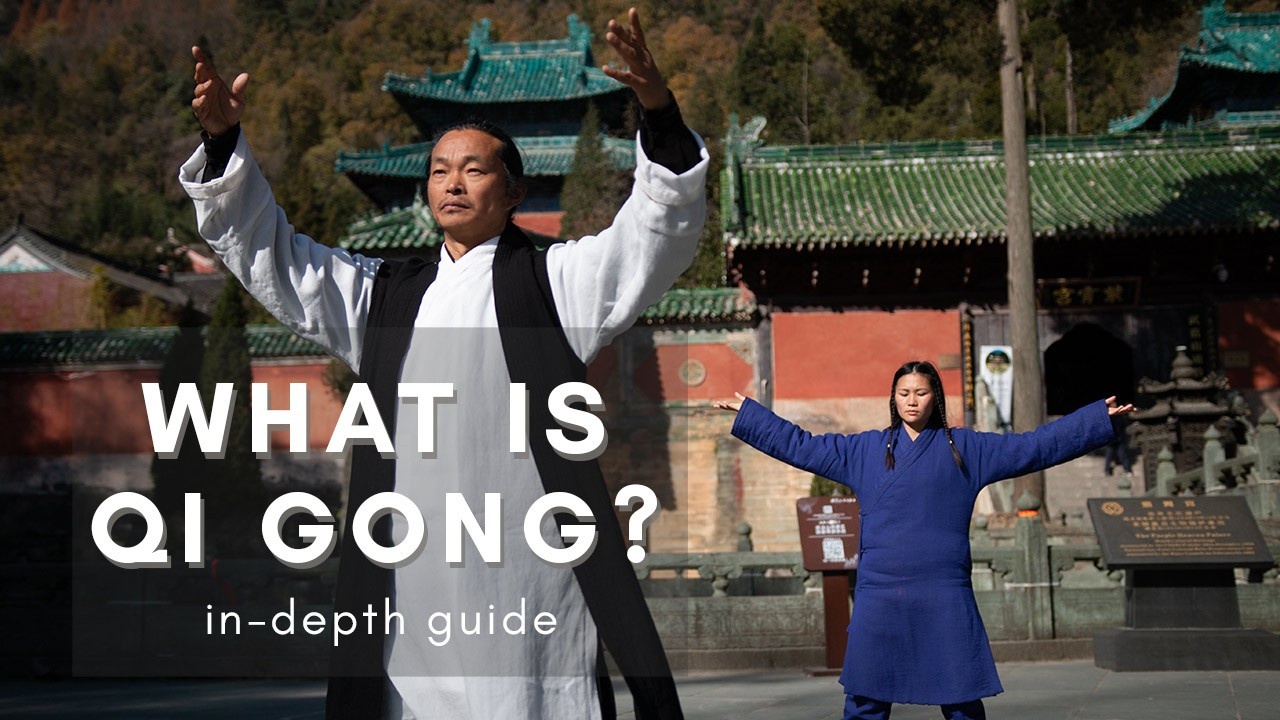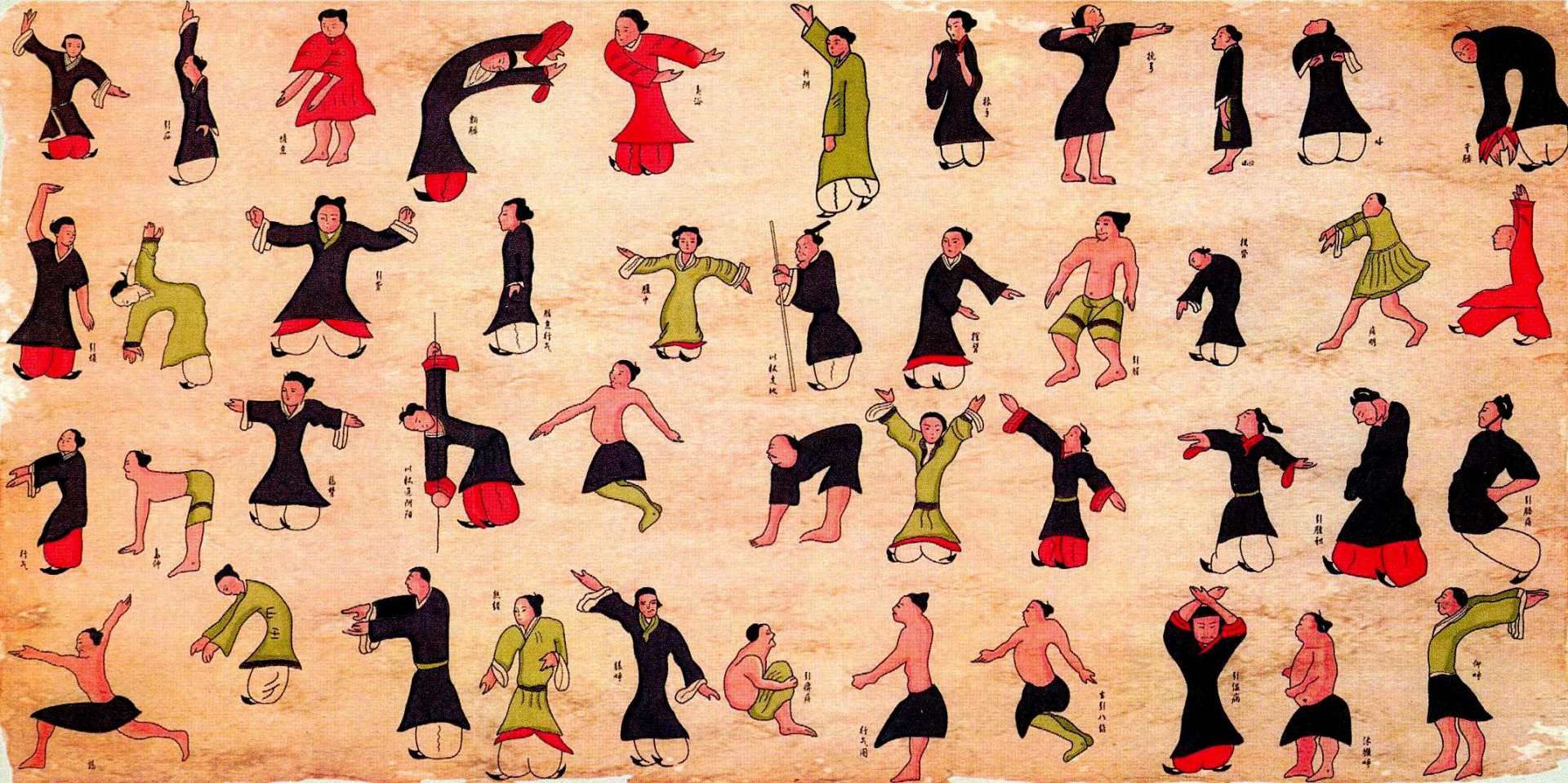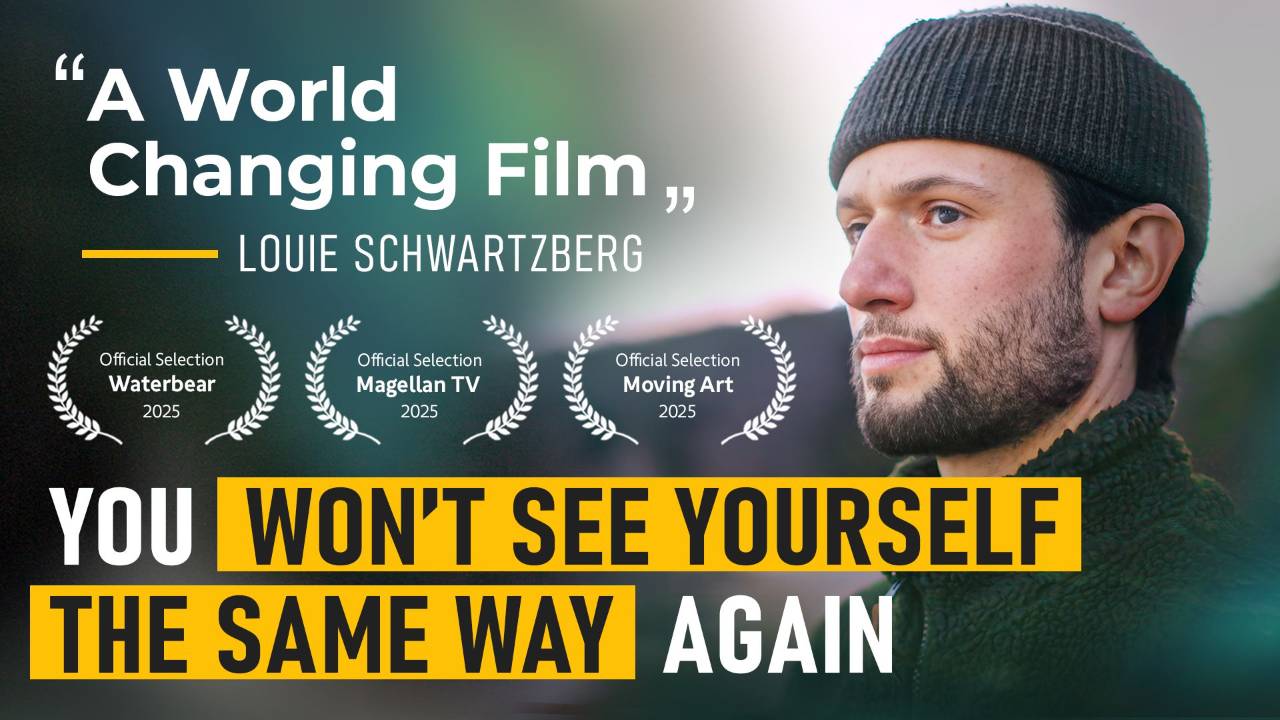What is Qi Gong? In-depth Guide: How to practice and power of Qi
Jun 01, 2023
I was 23 when I first tried Qi Gong.
I didn’t consider myself someone who would enjoy it. I got bored easily and thought my brain was too active. I was, however, confused and anxious, so open to anything that could help.
I left the UK on a quest to learn how to be kinder to myself. I arrived in the Wudang Mountains, China, intending to learn Kung Fu. The universe, however, brought me to a small Tai Chi school. There was no Kung Fu, just the slow mindful movements of Qi Gong, the beautiful flowing forms of Tai Chi, and a joyful teacher, Master Gu.
I instantly fell in love, and since then, Qi Gong, Tai Chi, and Taoism have transformed my physical, emotional, and spiritual health. In this guide, Master Gu and I would like to introduce Qi Gong, its history, healing power, and how you can get the most out of your practice.

Master Gu and I doing Jing Gong (tranquillity practice)
The Ancient Origins of Qi Gong
In 1973, a group of Chinese archaeologists uncovered a painting named the Daoyin Tu. It depicts forty-four coloured figures drawn in a dazzling diversity of postures:


Men and women, young and old, are seen stretching their arms and legs, leaning over, hopping, dancing, and imitating animals. Dating back to 168 BCE, it is the earliest physical exercise chart known to the world.
If you have seen someone practicing Qi Gong, or perhaps done it yourself, this picture will feel familiar. Daoyin is the ancient precursor to what we call Qi Gong today.
Daoyin can be translated as “guiding the qi and extending the limbs," referring to the two primary components of self-healing: breathing and movement.
The Power of Qi
The term Qi (气) translates as “breath” or “life energy”. China’s ancient healers believed breath to be a fundamental expression of the energy that animates our living world.
We have all had the experience in times of stress when our breath comes up into our chest. It’s fast and shallow. This only amplifies the tension we feel. Mindful belly breathing, by contrast, calms us down, grounds us, and helps us return to balance.
According to Traditional Chinese Medicine (TCM), as we breathe, the energy from the fresh air enters and flows around our body. It circulates our human Qi and nourishes the internal organs while pushing out any old, stagnant Qi.
Water needs to keep moving in order to stay fresh. In the same way, if we support the circulation of our Qi, we will live with vitality for many years to come.
The wise physician cures diseases before they develop. - Chinese Proverb
Understanding how to cultivate our Qi empowers us to take charge of our health. This is something we can do every day without external intervention. As Master Gu likes to say, “We are all our own doctors.”
Energy Practice Qigong:
What then is Qi Gong?
‘Gong’ translates as “work” or “practice”. So, Qi Gong can be defined as an energy practice. It is an exercise that enhances, strengthens, and circulates your life energy.
Taoist culture offers an abundance of ways to do Qi Gong: drinking tea, playing music, calligraphy, chess, walking in nature, Tai Chi, Qi Gong forms, sitting meditation, and simply enjoying the present moment.
So long as an activity involves movement (Dong) and tranquility (Jing), it can be called Qi Gong. Taoists distinguish between moving Qi practice (Dong Gong) and tranquility Qi practice (Jing Gong), but one type always contains the other:

Moving Qi Practice: Monkey 2, from the Five Animal Qi Gong Form
Dong Gong is what most likely comes to mind when you think of Qi Gong, which includes Tai Chi. It is yang; there is activity and movement. Yet it conceals the yin: inside there is inner peace and tranquility.

Tranquillity Qi Practice: Sitting Meditation
Jing Gong includes sitting or standing meditation. It is externally yin, tranquil, but internally yang, active. There are micro-adjustments of the muscles to keep you upright. The flow of the blood. The rise and fall of the breath. The Qi Gong practitioner is alert and present, observing this internal movement.
Understanding Qi Gong this way liberates our practice from merely repeating forms. So long as we are in the present moment, with our attention on our breath, teacup, or washing-up brush, we are moving with tranquility and thus cultivating our Qi.
Benefits of Qi Gong:
Qigong, a cornerstone of Traditional Chinese Medicine, merges martial arts, meditation, and breathing techniques to enhance the flow of Qi, or life force, within the body. This ancient practice, encompassing various forms and types of Qigong, has been refined over centuries to promote physical, mental, and spiritual well-being.
- Improves Quality of Life: Regular Qigong practice enhances overall well-being, reducing stress and increasing energy levels, thereby improving the quality of life.
- Enhances Physical Health: Qigong exercises strengthen the body, improve flexibility, and boost the immune system, helping to prevent illnesses.
- Promotes Mental Clarity: The meditative aspect of Qigong calms the mind, reduces anxiety, and fosters a state of mental clarity and peace.
- Balances Emotional Well-being: By harmonizing the flow of Qi, Qigong helps in balancing emotions, reducing feelings of depression, and enhancing mood.
- Supports Healing: Medical Qigong, a form of Qigong, is used as an adjunct therapy to accelerate recovery from various health conditions and to manage pain.
- Cultivates Spiritual Growth: Through the practice of Qigong, individuals connect with their inner selves, fostering spiritual growth and a deeper sense of connectedness with the universe.
The benefits of Qigong are recognized and promoted by national and international Qigong associations, which advocate for its practice as a means to improve health and vitality. As a versatile and accessible practice, Qigong can be tailored to fit the needs of individuals of all ages and physical conditions, making it a valuable tool for enhancing quality of life.
Types of Qi Gong:
Qigong, an ancient holistic practice, integrates movements, meditation, and regulated breathing to enhance life's energy, Qi. It encourages a harmonious Qi flow through the body, optimizing health and wellbeing. Qigong is generally classified into two main types: active and passive Qigong. Active Qigong, similar to Tai Chi, involves dynamic movements with focused breathing, guiding Qi through the body. Passive Qigong, on the other hand, emphasizes stillness and meditation, allowing Qi to flow naturally without physical exertion.
- Benefits: Qigong offers numerous health benefits, including stress reduction, improved circulation, and enhanced immune function. Regular Qigong practice may significantly improve quality of life and has been shown to reduce symptoms in various conditions.
- Principles: Central to Qigong is the belief in Qi's power to heal and balance. Practitioners learn to harness this energy through specific techniques, fostering a deep connection between mind, body, and spirit.
- Safety: The safety of Qigong makes it accessible to all, including during pregnancy, with adaptations available to ensure comfort and effectiveness.
Tai Chi Qigong and Health Qigong represent variations of Qigong styles, each offering a unique approach to cultivating energy and health. Qigong training, provided by certified Qigong instructors, equips individuals with the skills to practice safely and effectively. Medical Qigong, focusing on therapeutic benefits, serves as a complementary therapy to conventional treatments, demonstrating Qigong's versatility and depth. Whether through the gentle, flowing movements of Tai Chi or the meditative stillness of passive Qigong, practitioners experience a profound sense of peace and vitality.
Qi Gong Forms
Over a period of centuries, Taoist and Buddhist communities developed the Qi Gong forms themselves. What most forms have in common are slow, repeated movements done with deep diaphragmatic breathing, a calm mental presence, and visualizations of how the Qi is flowing through the body.
The main three forms taught by Master Gu on the Online Wudang Taoist Wellness Academy are the Five Animal Qi Gong, Ba Duan Jin Qi Gong, and Six-Word Healing Qi Gong. There are hundreds of such forms from many different schools.

Master Gu performing the 6 healing sounds Qi Gong form
These gentle movements warm tendons, ligaments, and muscles and promote blood circulation. A Qi Gong form is a fantastic way to start the day. It can prevent injury, improve your balance, strengthen your muscles, and it is a reliable tool to help process tough emotions, stress, and spiritual crises.
How to get the most from your practice
Now that we have an understanding of why Qi is important and what is involved in Qi practice, here are some tips to help you get deeper:
Choose a good time and place
First thing in the morning is generally the best and most reliable time to practice. Waking up for the sunrise and standing in front of the sun as it lights up the world can invigorate you for the rest of the day.
If you can get outside, do so. A Qi Gong form is a fantastic excuse to get out of the house first thing. Let the fresh breeze wake you up, and let the bird song connect you with nature. Qi Gong recognizes that nature is an important facet of healing. We are part of the natural environment; we grow out of it in the same way that a wave emerges from the ocean or a tree grows in the forest. While practicing Qi Gong, let nature become part of your experience.
Of course, the best time and place are the ones that work for you. Somewhere is better than nowhere. I often practice in my bedroom or the kitchen while the kettle is boiling. Consistency beats duration. 5 minutes daily is better than 20 minutes once a week. Adapt your practice based on how much time you want to spend on it. I feel the benefits of just one minute of Qi Gong standing. Don’t make your practice so big that you convince yourself you don’t have time!
Relaxation, relaxation, relaxation
A quote from the highly recommended book “The Way of Qi Gong” by Kenneth Cohen:
“The Chinese word song has very different connotations from the equivalent English word, “relaxation”. When we say “relax” in English, we often mean eliminating all tension, becoming almost limp. Song, however, implies greater aliveness.
As my teacher, Charlotte Selver, used to say, “A flower is relaxed.” Song is not merely the absence of tension, but rather the absence of unnecessary tension. Song is the art of becoming aware of and inhibiting the habitual contraction of muscles due to emotional stresses and poor habits of posture, breathing, and movement.
The complete Chinese term for this qigong is fang (doing or releasing) song (relaxation) gong (work). We can translate the entire phrase as “active relaxation.” Active relaxation is a form of qigong in itself; it is also essential preparation for all styles of qigong. It includes the following attributes: awareness and tranquillity, effortlessness, sensitivity, warmth, and rootedness.”
Use your imagination
Meditating with Master Gu is a really enjoyable experience. Sometimes you will visualize a beautiful scene. Sitting on the green grass on a summer’s day, watching the clouds float by. Other times you imagine your breath as a waterfall bringing the energy down into your belly and then, as mist, rising up your back, over your head, and out of your mouth.
The Taoists believe this sort of visualization is powerful – try it out for yourself!
Breathe naturally
Qi Gong and Taoism emphasize naturalness, simplicity, and tranquility. Too much focus on the breath can mean we get in our own way. We start overthinking, and it’s harder for us to relax into a natural sense of poise and balance. Distinguish therefore between “focus” and “attention”.
If there were a way to sum up Qi Gong breathing in two words, it would be “breathe naturally.” While we may be eager to circulate our Qi, there is no need to force it. Our body knows how to do it by itself; all we need to do is observe and allow. That is when we get to experience the magic of nature!
Once you’re deeper into your practice, you may want to spend some time with the post about Qi Gong breathing techniques. Briefly, you want to guide your breath deep into your abdomen. According to TCM, this ensures proper Qi circulation: fresh air reaches the energy centre just below your navel, then on the exhale, stagnant Qi can rise and be released.
Recommended practice order
- Start with some light movements to wake up the body. Shake your arms and legs.
- Then move on to standing meditation. Bring your attention to the body and connect with your breathing. Take 5-10 minutes to feel grounded.
- Do a Qi Gong form – there are lots you can choose from, and I’ll mention below how you can learn more with Master Gu.
Enjoy yourself!
Intimidated by the precise physicality of the movements? Understandable, but you will soon discover that you’ll be fine. “Thirty percent of Qi Gong is learning the technical skills, but the remaining 70 percent is about nurturing and learning how to practice self-care. We’re finding out how we can take care of ourselves, slow down, and do less,” Cohen says.
The goal of Qi Gong isn’t adding new complex practices; rather, it is a process of subtraction. The more we can get out of our own way, the more we can let the universal flow of energy move through us.
Have fun moving with tranquility!
—
George Thompson & Zhenya Zerkalenkov
San Feng Pai 16th Generation Tai Chi disciple, Taoist Explorer
How to learn Qi Gong with Master Gu Online
If you would like to learn how to activate your energy with Master Gu, you are warmly invited to join the Online Wudang Taoist Wellness Academy. The academy is designed to help you live long and well. It teaches Tai Chi, Qi Gong, and Taoist philosophy from the Wudang Mountains, China.
As a student, you can get in-depth with Tai Chi and Qi Gong breathing. You’ll learn concepts such as:
- A powerful morning meridian adjustment Qi Gong
- “Tu Na” expelling the old and inhaling the new.
- How to stand strong like a tree.
- Linguistically guided Qi Gong meditations
- Immortal’s Waterfall breathing technique
- Step-by-step tuition of 5 animal Qi Gong, six healing sound Qi Gong, and Ba Duan Jin Qi Gong.
- Taoist philosophy lectures
- +more!
Students also get to join Master Gu for a live Zoom Q&A every month to ask their questions. If you are interested in becoming a student, click here to learn more!

Further Reading
- The Way of Qi Gong - Kenneth Cohen: Bookshop.org USA Amazon
- Embrace Tiger, Return to Mountain: The Essence of Taiji - Chungliang Al Huang: Bookshop.org USA Amazon Bookshop.org UK
Disclosure: The above are affiliate links, meaning George receives a commission if you decide to purchase through the link. This is at no additional cost to you.







